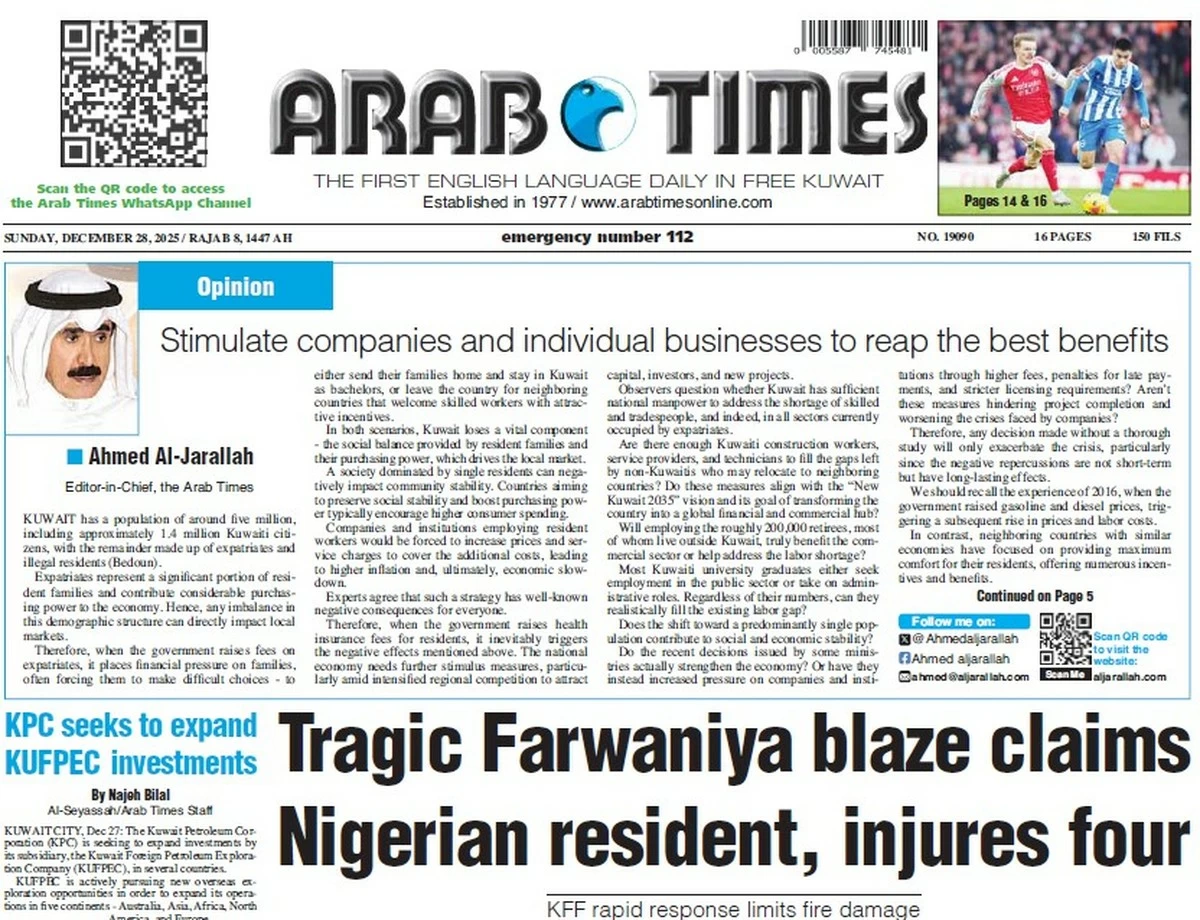02/10/2022
02/10/2022
KUWAIT CITY, Oct 2: The GCC countries have more than 70 economic zones, 47 of which are in the UAE alone, while Saudi Arabia and the Sultanate of Oman have 10 each, while Kuwait has only 4 economic zones, Bahrain 3, and Qatar 2. However, in light of the ambitious future plans of the countries of the region, the numbers are bound to rise, especially in Saudi Arabia and the UAE. MEED magazine said in a recent report that there is a remarkable growth of special economic zones worldwide, including logistic centers, free zones and industrial clusters, as there were less than 200 economic zones around the world during the 1980s, but today there are more than 7,000 in about 140 countries.
Growth
The report emphasized that the GCC countries are at the forefront of this growth, and with good reason, which is that the geographic advantage that the Gulf states enjoy in the relationship between East and West remains as strong as it has been for centuries. At a time when global competition to attract companies to special economic zones remains fierce, the Mideast region seamlessly connects billions of people through some of the planet’s most advanced airports and seaports and business- friendly special economic zones. When it comes to SEZs, it should not only be about quantity, as it is essential that SEZs provide profitable solutions for the countries that invest in them as well as the companies that use them. This means that in exchange for SEZs providing financial incentives, customized cost and benefits, seamless business operations and world-class infrastructure, it is critical that private companies contribute to the national economy, create jobs, inspire innovation, drive economic diversification, and become enabling factors for the strong economic development.
A world-famous example is the Jebel Ali Free Zone (Jafza). When it was launched in 1985, there were only 19 companies in the area. Today, however, Jafza represents nearly 24% of foreign direct investment in Dubai, as the free zone includes 9,000 registered companies from more than 130 countries, employs more than 135,000 people, and has generated 454 billion dirhams ($123.6 billion) in trade in 2021, an annual increase of 19%. Looking to the future, how can the benefits of SEZs be enhanced in the future? Without a doubt, technology and sustainability must play major roles. The Internet of things, advanced robotics, 3D printing, and big data are reshaping our world and global value chains and will undoubtedly be at the heart of transforming special economic zones in the GCC.


